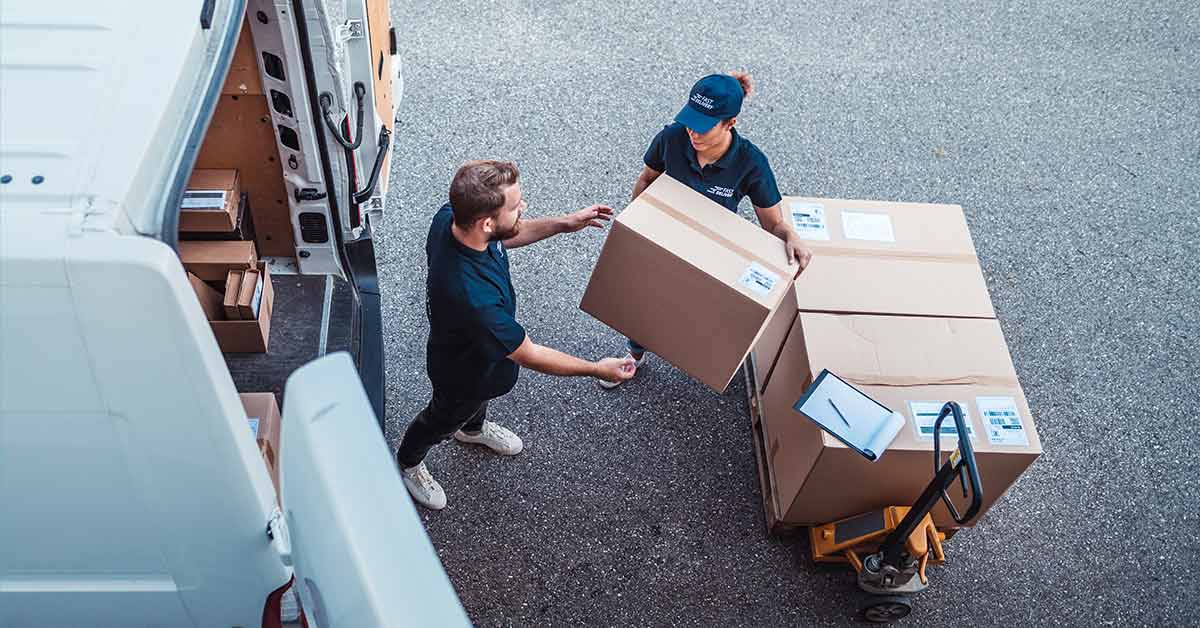
How to Reduce Waste and Improve Sustainability in Retail
As consumer expectations shift toward environmentally responsible practices, retailers must adopt strategies to minimise waste and improve sustainability. Implementing zero-waste retail initiatives, using sustainable packaging solutions, and taking steps to reduce retail carbon footprint can help businesses lower costs, enhance brand reputation, and meet regulatory requirements.
This guide explores effective strategies to reduce waste, embrace sustainability, and create a greener retail future.
Quick Guide: Sustainability in Retail Essentials
- Eliminate single-use plastics and switch to eco-friendly alternatives
- Embrace circular economy models to extend product life cycles
- Minimise food and product waste through smarter inventory and donation
- Switch to biodegradable, recyclable, or refillable packaging options
- Cut carbon footprint by reducing energy, water use, and transport emissions
- Encourage customer participation in zero-waste and reuse programs
Pro Tip
Sustainability sells. Highlight your eco-friendly efforts through product labels, in-store signage, and marketing campaigns—transparency builds customer trust.
Important
Sustainable practices aren’t just about ethics—they’re about efficiency. Streamlining packaging, reducing waste, and optimising energy use all contribute to healthier margins and happier customers.
The Importance of Sustainability in Retail

Sustainability is no longer just an option for retailers; it is a necessity. Businesses that fail to adopt eco-friendly practices risk losing customers and facing increased regulatory scrutiny.
Key Benefits of Sustainable Retail Practices:
- Cost Savings: Reducing waste lowers operational expenses.
- Customer Loyalty: Consumers prefer brands with strong environmental commitments.
- Regulatory Compliance: Governments are enforcing stricter sustainability laws.
- Brand Reputation: Sustainable businesses attract positive media attention and investor interest.
- Environmental Impact Reduction: Helps combat climate change and resource depletion.
Retailers that prioritise sustainability can drive long-term success while making a positive impact on the planet.
Zero Waste Retail: Minimising Waste Across Operations
1. Reduce Single-Use Plastics
Single-use plastics contribute significantly to retail waste. Eliminating unnecessary plastic packaging and switching to reusable alternatives can make a substantial difference.
Best Practices:
- Replace plastic shopping bags with paper or reusable alternatives.
- Encourage customers to bring their own bags and containers.
- Use compostable or biodegradable alternatives for product packaging.
- Partner with suppliers that prioritise plastic-free materials.
2. Implement a Circular Economy Model
A circular economy focuses on keeping products and materials in use for as long as possible.
How to Adopt a Circular Model:
- Offer product repair and refurbishment services.
- Introduce take-back programs for recycling or upcycling used items.
- Partner with organisations that repurpose unsold or returned goods.
- Use durable materials that extend product life cycles.
3. Minimise Food and Product Waste
Retailers in the food and fashion industries generate significant waste. Adopting waste-reduction strategies can save money and reduce environmental impact.
Strategies to Reduce Product Waste:
- Implement AI-driven inventory management to prevent overstocking.
- Donate surplus food and products to charities.
- Offer discounts on near-expiry or clearance items.
- Educate customers on product care and waste reduction.
4. Encourage Waste-Free Shopping Habits
Encouraging customers to shop more sustainably can drive engagement and loyalty.
Ways to Promote Zero Waste Retail:
- Offer refillable product stations for items like cleaning supplies and personal care.
- Incentivise customers to return used containers for discounts.
- Introduce zero-waste subscription models.
- Provide eco-friendly shopping guides and educational content.
Sustainable Packaging Solutions for Retailers

1. Switch to Biodegradable and Recyclable Packaging
Using sustainable packaging solutions reduces environmental impact and appeals to eco-conscious consumers.
Sustainable Packaging Alternatives:
- Recycled cardboard and paper-based packaging.
- Cornstarch, mushroom-based, and seaweed packaging.
- Minimalist packaging to reduce excess waste.
- Edible or dissolvable packaging for food and beverage products.
2. Implement a Packaging Reduction Strategy
Reducing packaging waste at the source helps businesses lower costs and improve sustainability.
Packaging Reduction Tips:
- Use compact and lightweight designs to reduce materials and shipping emissions.
- Remove unnecessary layers of packaging.
- Offer package-free options where possible.
- Encourage bulk purchases with minimal packaging.
3. Offer Reusable and Refillable Packaging
Reusable packaging reduces waste and enhances customer engagement.
Examples of Reusable Packaging Initiatives:
- Glass jars and refillable containers for beauty and cleaning products.
- Cloth or recycled-material shopping bags.
- Deposit return schemes for bottles and packaging.
- Packaging swap programs that allow customers to return packaging for reuse.
How to Reduce Retail Carbon Footprint
1. Optimize Energy Consumption
Reducing energy usage lowers costs and minimises environmental impact.
Energy-Saving Strategies:
- Switch to LED lighting and motion sensors.
- Upgrade to energy-efficient heating, ventilation, and cooling (HVAC) systems.
- Use renewable energy sources like solar or wind power.
- Conduct energy audits to identify and address inefficiencies.
2. Improve Supply Chain Sustainability
Retail supply chains contribute significantly to carbon emissions. Optimising logistics and sourcing practices can create a more sustainable operation.
Sustainable Supply Chain Practices:
- Partner with eco-friendly suppliers.
- Source materials and products locally to reduce transportation emissions.
- Use electric or hybrid delivery vehicles.
- Consolidate shipments to reduce transportation frequency.
3. Reduce Water Usage in Retail Operations
Water conservation is an important part of zero-waste retail.
Water-Saving Strategies:
- Install low-flow faucets and water-efficient appliances.
- Implement rainwater harvesting for non-drinking purposes.
- Encourage sustainable water usage practices among employees.
- Monitor and repair leaks to prevent water waste.
4. Offset Carbon Emissions
Even with sustainability efforts, some emissions are unavoidable. Offsetting carbon footprints helps mitigate environmental impact.
Ways to Offset Emissions:
- Invest in reforestation or carbon offset programs.
- Support renewable energy projects.
- Participate in environmental conservation initiatives.
- Encourage customers to offset their purchases through optional donations.
Case Studies: Retailers Leading in Sustainability
1. Patagonia: Sustainable Supply Chain
Patagonia has built a reputation for sustainability by sourcing eco-friendly materials, implementing repair programs, and investing in environmental conservation projects.
2. Lush Cosmetics: Zero-Waste Packaging
Lush has eliminated plastic packaging for many products, offering solid alternatives like shampoo bars and refillable containers.
3. IKEA: Carbon-Neutral Goals
IKEA aims to become climate-positive by 2030 through energy efficiency, sustainable sourcing, and innovative recycling programs.
These companies demonstrate that sustainability efforts can drive profitability and customer loyalty while reducing environmental impact.
FAQs: Retail Sustainability
1. What is zero-waste retail?
Zero-waste retail aims to eliminate waste by rethinking packaging, processes, and consumer habits—focusing on reuse, recycling, and responsible sourcing.
2. How can retailers reduce packaging waste?
Switch to recycled or compostable materials, reduce unnecessary packaging, and offer refillable product options.
3. Is sustainable packaging more expensive?
Initially, yes—but long-term savings and increased customer loyalty often outweigh the upfront investment.
4. What are easy ways to reduce energy use in stores?
Start with LED lighting, smart thermostats, energy audits, and sourcing electricity from renewable providers.
5. How can I educate customers on sustainability?
Use signage, digital content, and staff training to explain your sustainability initiatives and encourage conscious shopping behaviours.
Conclusion: Building a Sustainable Retail Future

Embracing zero-waste retail and sustainable packaging solutions is essential for reducing environmental impact and meeting customer expectations. By taking steps to reduce retail carbon footprint, retailers can improve efficiency, save costs, and strengthen their brand’s reputation.
Key Takeaways are minimising waste through zero-waste initiatives and sustainable sourcing, adopting eco-friendly and reusable packaging alternatives, reducing carbon footprint by optimising energy, water, and logistics, educating and engaging customers in sustainable shopping practices, and tracking and measuring sustainability goals for continuous improvement.
By prioritising sustainability, retailers can contribute to a healthier planet while ensuring long-term business success.


